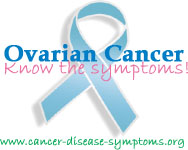Contrary to what you may have heard, ovarian cancer does present with signs and symptoms. Unfortunately, they can be so general—lower abdomen discomfort, dyspepsia, and early satiety, for example—that you dismiss them. The most important message I can convey is: Don't ignore any persistent symptoms. The classic pelvic examination—during which the clinician searches for palpable ovarian masses—is the starting point for a diagnosis of ovarian cancer. In premenopausal women, enlarged ovaries are common and usually are caused by ovarian cysts. The clinician usually follows the mass through several menstrual cycles.
In premenarchal children and adolescents and postmenopausal women, a palpable ovarian mass isn't normal and must be investigated with a CA-125 tumor antigen blood test and a transvaginal ultrasound. Color Doppler imaging studies also may be used to measure blood flow patterns to ovarian vessels. Increased blood flow resistance signals a mahgnancy. If these studies document an abnormality, the next step is a computed tomography scan of the abdomen and pelvis, possibly followed by a barium enema or a colonoscopy.
The CA-125 tumor antigen is associated with ovarian cancer. In fact, 80% or more of women with ovarian cancer have an elevated CA-125 level. The problem is that it's also elevated in some benign diseases and other malignancies as well, so it's not specific enough to detect the disease. The CA-125 tumor antigen has a role in indicating early treatment failure, confirmation of relapse, and in decision making during relapse therapy in ovarian cancer.
Friday, November 24, 2006
Subscribe to:
Post Comments (Atom)

No comments:
Post a Comment